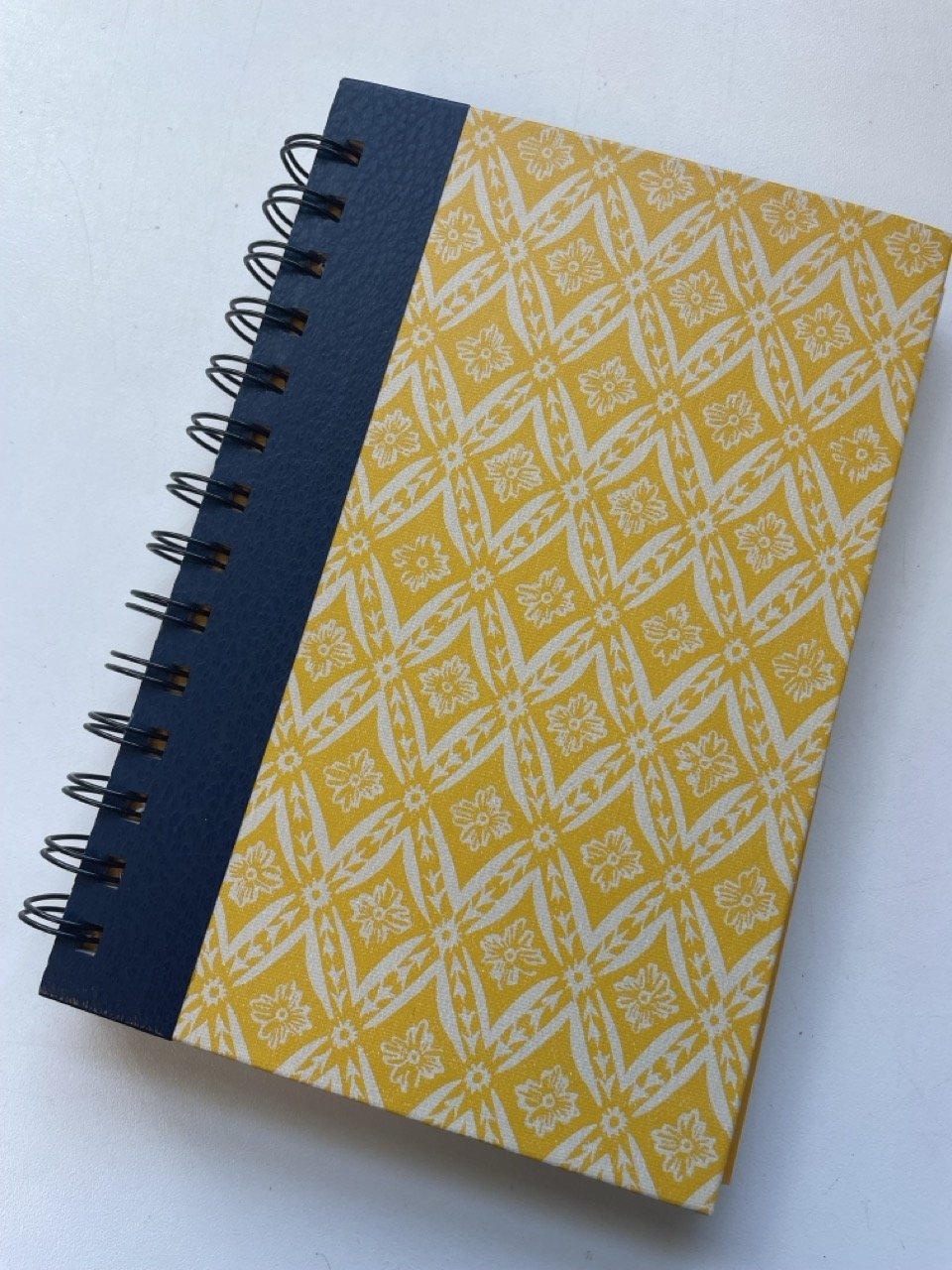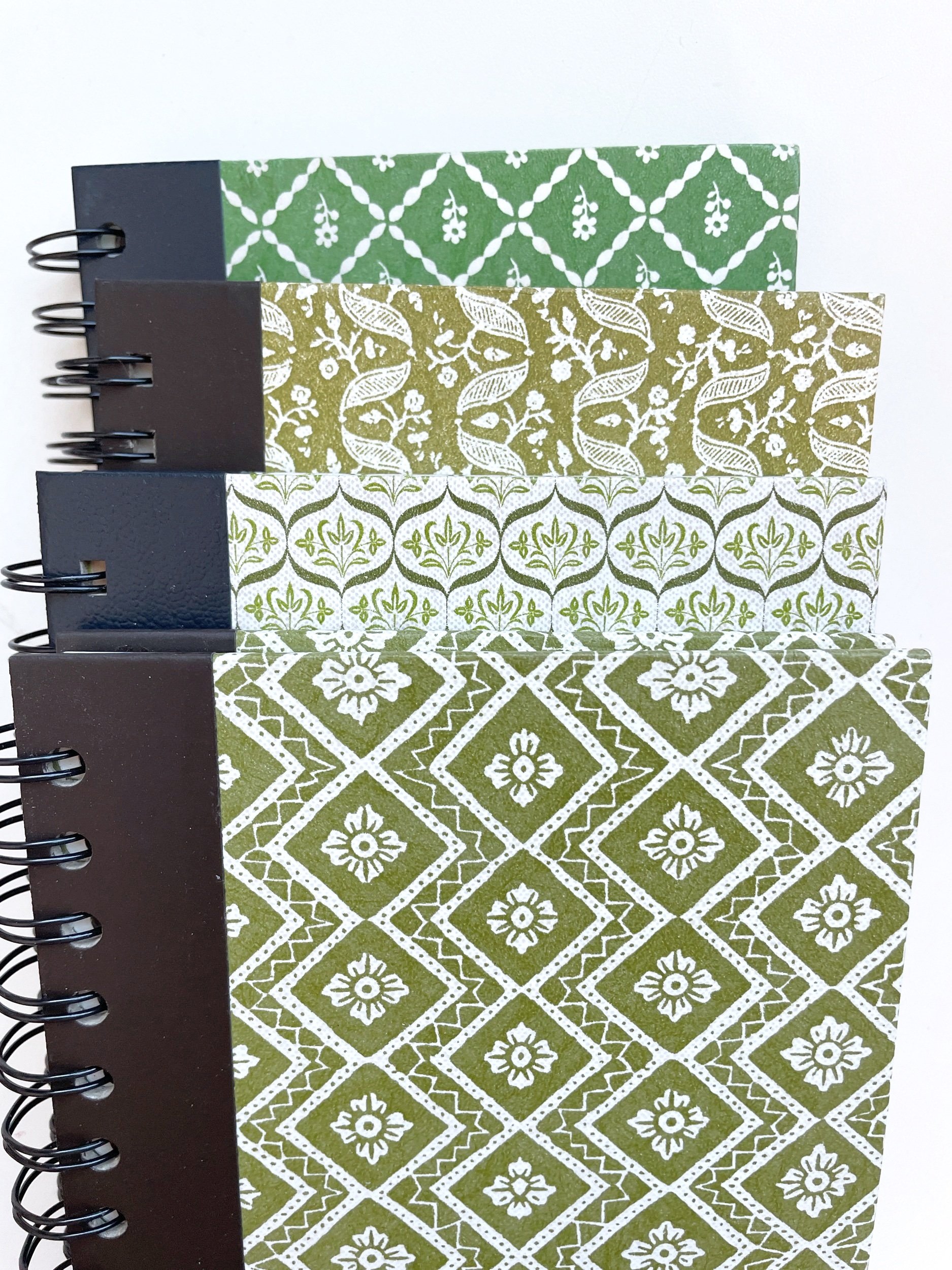Repurposed Reader’s Digest Books: Handmade Vintage Art Journals with a Sustainable Twist
If you’ve ever wandered through a thrift store or estate sale, chances are you’ve seen them—those chunky, beautifully patterned hardbound books with Reader’s Digest Condensed Books stamped on the spine. These books, once a staple in home libraries, are now relics of another time. But for me? They’re a goldmine for repurposed journals.
Why I Repurpose These Books into Art Journals
These books are beautiful, and many of them are headed straight to the landfill. So, I transform them into something practical and creative: handmade art journals. You can use them for junk journaling, watercolor, or acrylic paper—whatever sparks your creativity.
Each Reader’s Digest journal is filled with thick paper (roughly the weight of watercolor paper). And here’s the best part: I don’t use brand new paper. Just like the covers, the paper inside is also repurposed. I source paper from thrift stores, businesses closing down, and even through calls for unwanted paper on Craigslist. My mission is to keep as much as possible out of the landfill, so you can feel good knowing that about 90% of your journal is made from repurposed materials.
A Brief History of Reader’s Digest Books
Reader’s Digest started as a magazine in 1922, condensing articles into bite-sized, easy-to-read formats. In 1950, they introduced their hardbound Condensed Books series—abridged versions of popular novels, bound in striking covers that changed with the decades. Each book typically contained four or five novels, offering an affordable way to experience bestsellers without breaking the bank.
Over the years, these books followed distinct design trends:
1950s – Classic & Minimalist: Simple cloth covers, gold lettering, and subdued colors.
1960s – Elegant & Refined: Faux leather textures, intricate embossing, and muted tones.
1970s – Bold & Decorative: Brighter colors, two-tone covers, and a shift toward bookshelf aesthetics.
1980s – Graphic & Patterned: Stripes, geometric designs, and bold typography.
1990s – Vibrant & Uniform: Jewel tones, symmetrical designs, and a more polished look.
2000s & Beyond – Modernized: Simpler styles, laminated covers, and a transition toward paperbacks and digital.
While they may not hold much value to collectors (most editions sell for just a few bucks), these books are a dream for people like me who love giving old things new life.
The Heart of the Story
I think there’s something special about writing in a journal made from a book that has already lived a life. It carries the weight of past stories—both the ones printed inside and the ones imagined by its readers. Plus, repurposing them aligns with my commitment to sustainable creativity. Instead of buying new materials, I breathe new life into forgotten treasures, giving them a second chance as a canvas for someone else’s ideas, sketches, and dreams.
So, next time you see a stack of old Reader’s Digest books, don’t just pass them by—think about the history they hold and the new stories they can help create. And if you want one already transformed into a one-of-a-kind journal, you know where to find me. 😉




